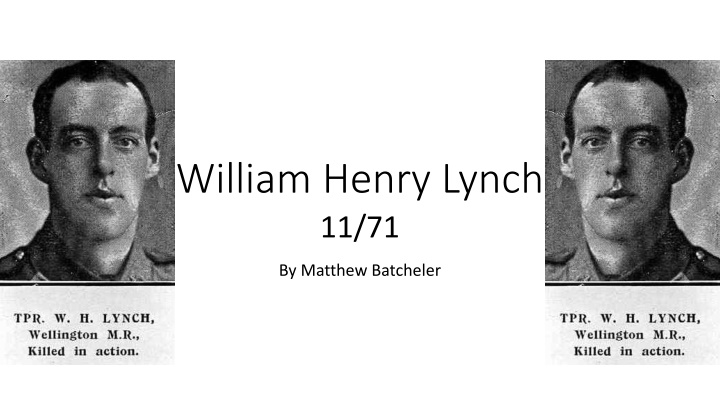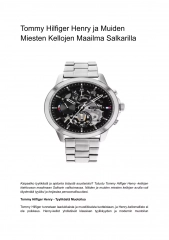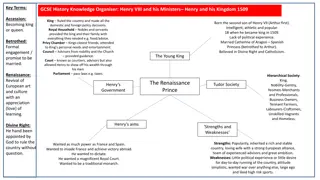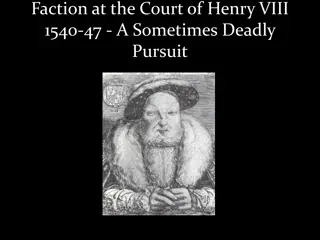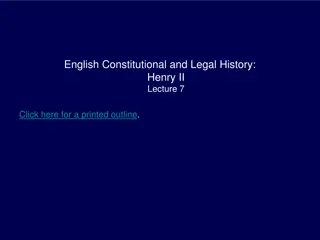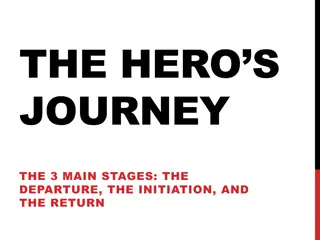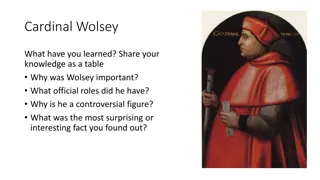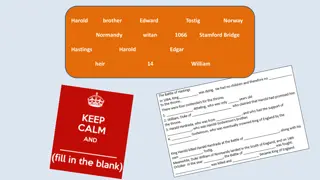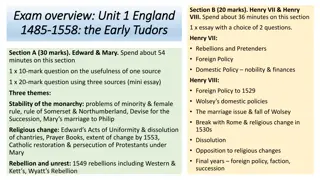The Remarkable Story of William Henry Lynch: Gallipoli Hero
Born in Wellington in 1895, William Henry Lynch enlisted in the army in 1914, embarking on a journey from New Zealand to Gallipoli, where he tragically lost his life in the Battle of Chunuk Bair in 1915. Despite dental issues, Lynch fought with valor as part of the Wellington Mounted Rifles, representing a legacy of bravery and sacrifice. His story intertwines with the challenges faced by soldiers during WWI, showcasing the human aspect of war and honoring those who served.
Download Presentation

Please find below an Image/Link to download the presentation.
The content on the website is provided AS IS for your information and personal use only. It may not be sold, licensed, or shared on other websites without obtaining consent from the author.If you encounter any issues during the download, it is possible that the publisher has removed the file from their server.
You are allowed to download the files provided on this website for personal or commercial use, subject to the condition that they are used lawfully. All files are the property of their respective owners.
The content on the website is provided AS IS for your information and personal use only. It may not be sold, licensed, or shared on other websites without obtaining consent from the author.
E N D
Presentation Transcript
William Henry Lynch 11/71 By Matthew Batcheler
Background William Henry Lynch was born in Wellington on the 27th of October 1895. He enlisted into the army in 1914 He left New Zealand on the 16th of October 1914, onboard the Orari (HMNZT 6) to Sri Lanka then on to Egypt.
Mounted Rifles Lynch was part of the Wellington Mounted Rifles Unlike traditional cavalry, they rode into battle on horseback but dismounted before actually fighting. They were joined by the Auckland, Canterbury and Otago mounted rifles, and rode in formation that reflected the four groups. The regiment went to Gallipoli, where Lynch died, then on to the Sinai Peninsula and Palestine.
Dental issues During his enlistment, his teeth were described as Not good by a medical officer. On the 26th of November 1914 while on board the Orari, en route to Sri Lanka, Lynch saw a dentist. According to military records, he had 28 teeth in stump condition which were extracted, and 4 lost. Many aspiring soldiers were rejected for poor teeth, but William was allowed to stay because of his prior military experience. He was given two dentures.
Gallipoli In May 1915, after training in Egypt, the invasion of Gallipoli began. On the 9th the mounted rifles departed on the ship the HMT Grantully Castle without their horses They arrived off the coast of Gallipoli at 12:30am on the 12th. They were loaded onto destroyers and the invasion commenced.
Death On the 9th of August 1915 William Henry Lynch was killed in action at the Battle of Chunuk Bair. Chunuk Bair was a peak on the Sari Bair mountain range and was one of the primary objectives for the initial Allied invasion. At around 3:00 am on the 8th the Allied forces managed to take the hill after a Naval Bombardment. However, the hill was very hard to entrench in and defend. By 5am the Ottomans had launched a counterattack and by 5pm they had reclaimed the eastern side of the hill and had reinforcements. By nightfall 711 out of 760 of the Wellingtonians to reach the summit had been killed or wounded. Lynch was killed while defending the hill. On the morning of the 10th the Ottomans retook the hill by overwhelming force.
Personal connection Andrew Lyon Divett Keen (46727) My Great-Grandfather, Andrew Lyon Divett Keen, from Invercargill, was a carpenter who fought in WWI He enlisted on the 9th of December 1916 He left for France on the 26th of October 1917 Got sick 8 times, including being admitted to hospital in Devonport Was wounded 4 times Wasn t a hugely remarkable soldier, staying a Private all throughout the war but did manage to survive, something many did not manage.
My thoughts During this research I was astounded at the many walks of life the people who served their country came from. There were teachers, cheesemakers, billiard-makers, master bricklayers, watchmakers, etc. The amount of dead was also astounding. 93% of William Henry Lynch s battalion who made it to the top of Chunuk Bair became casulties. There was also an intense sense of desperation among the soldiers, recounted as firing their rifles and those of their fallen companions until the wood of the stock was too hot to touch while attempting to defend Chunuk Bair.
http://ndhadeliver.natlib.govt.nz/delivery/DeliveryManagerServlet?dps_pid=http://ndhadeliver.natlib.govt.nz/delivery/DeliveryManagerServlet?dps_pid= IE11501156 http://ndhadeliver.natlib.govt.nz/delivery/DeliveryManagerServlet?dps_pid= IE18922520 http://www.aucklandmuseum.com/war-memorial/online- cenotaph/record/C9053?n=william%20henry%20lynch&ordinal=0&from=%2 Fwar-memorial%2Fonline-cenotaph%2Fsearch https://www.cwgc.org/find-war-dead/casualty/680137/lynch,-william- henry/ https://www.walkingwithananzac.co.nz/william-henry-lynch https://nzhistory.govt.nz/war/wellington-mounted-rifles/1914 http://navymuseum.co.nz/worldwar1/ships/troopships-that-departed-new- zealand-during-world-war-one/ https://nzhistory.govt.nz/war/new-zealand-mounted-rifles https://www.flotilla-australia.com/hmnzt.htm https://en.wikipedia.org/wiki/Battle_of_Chunuk_Bair
